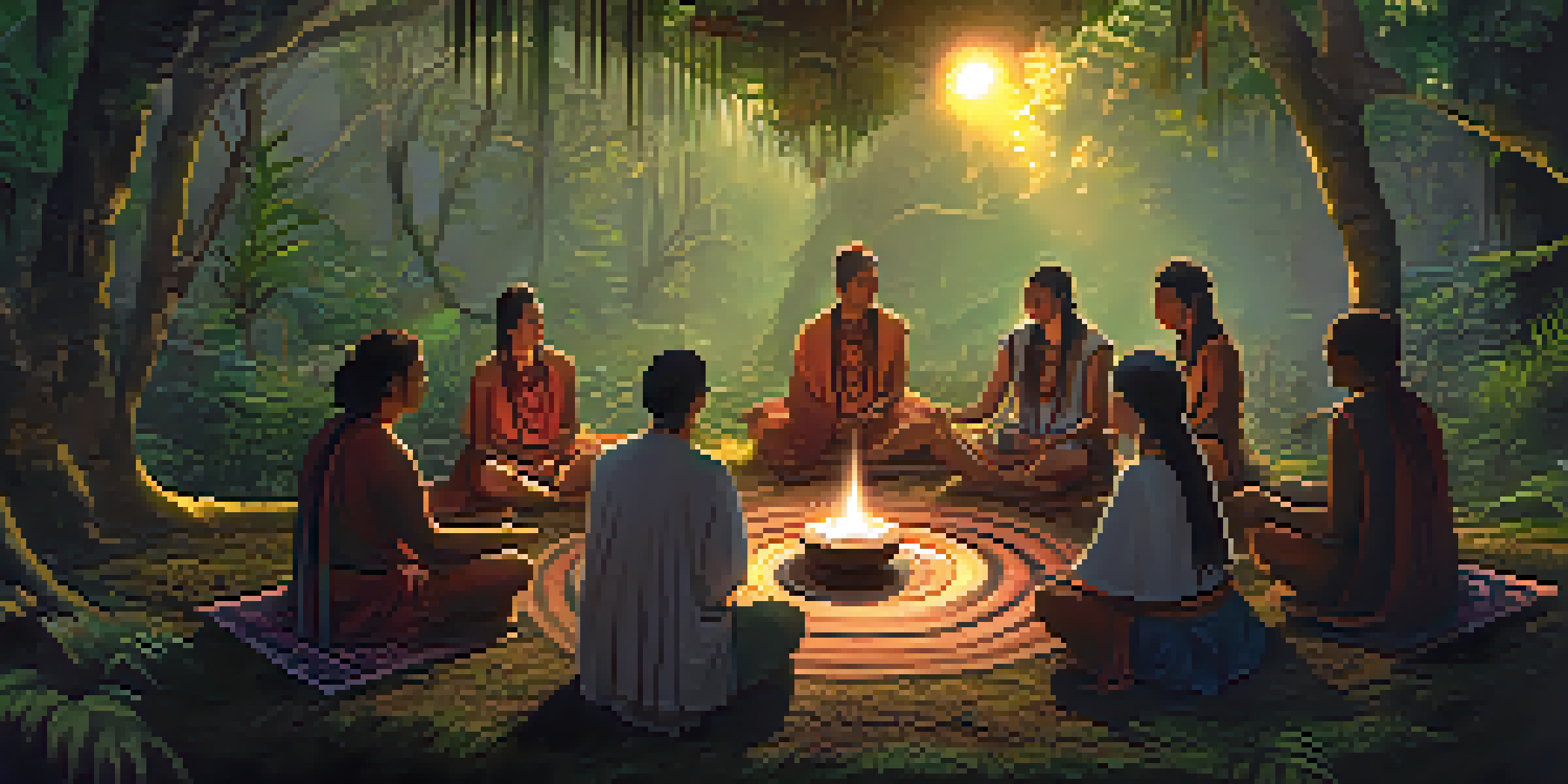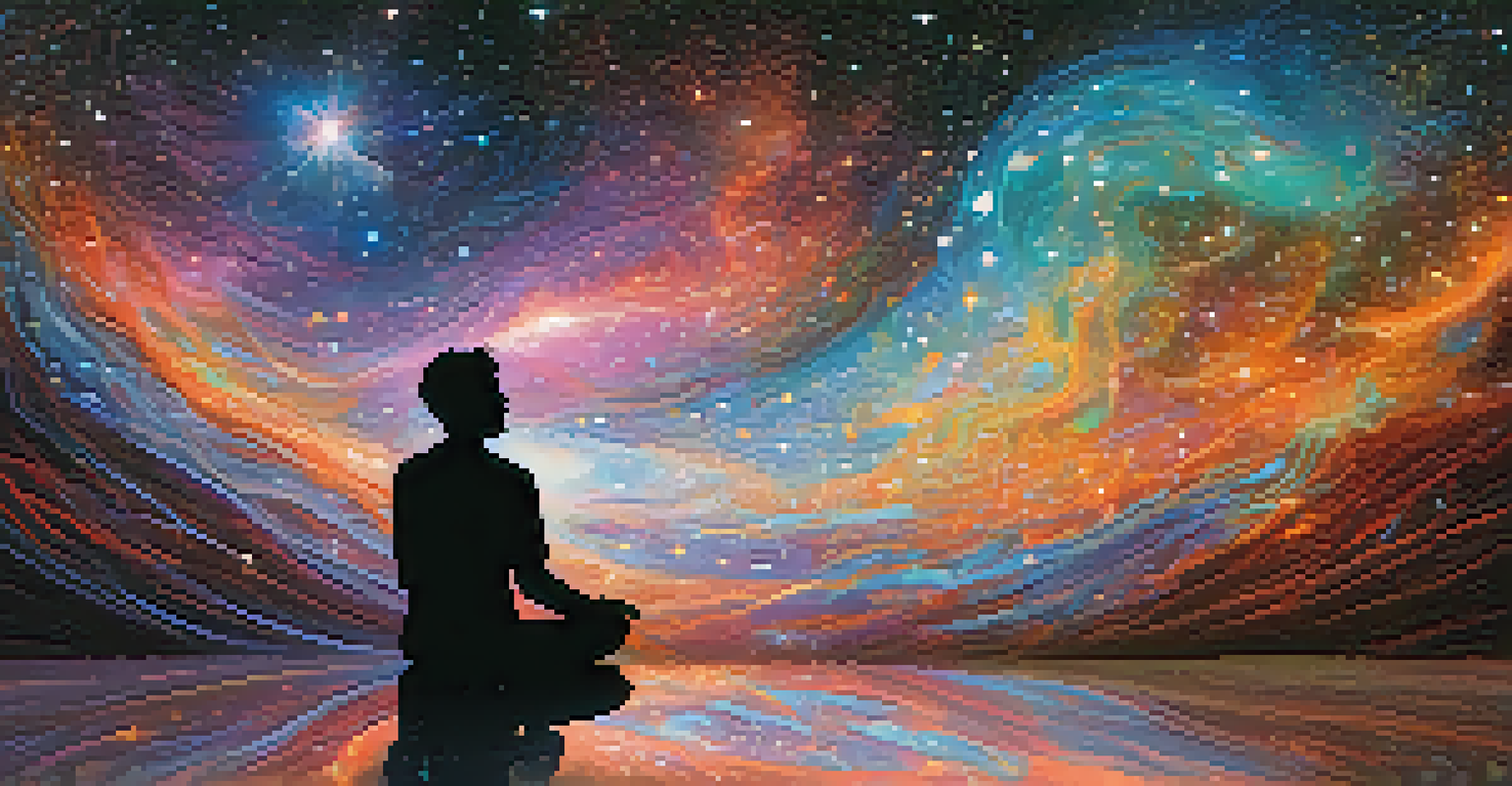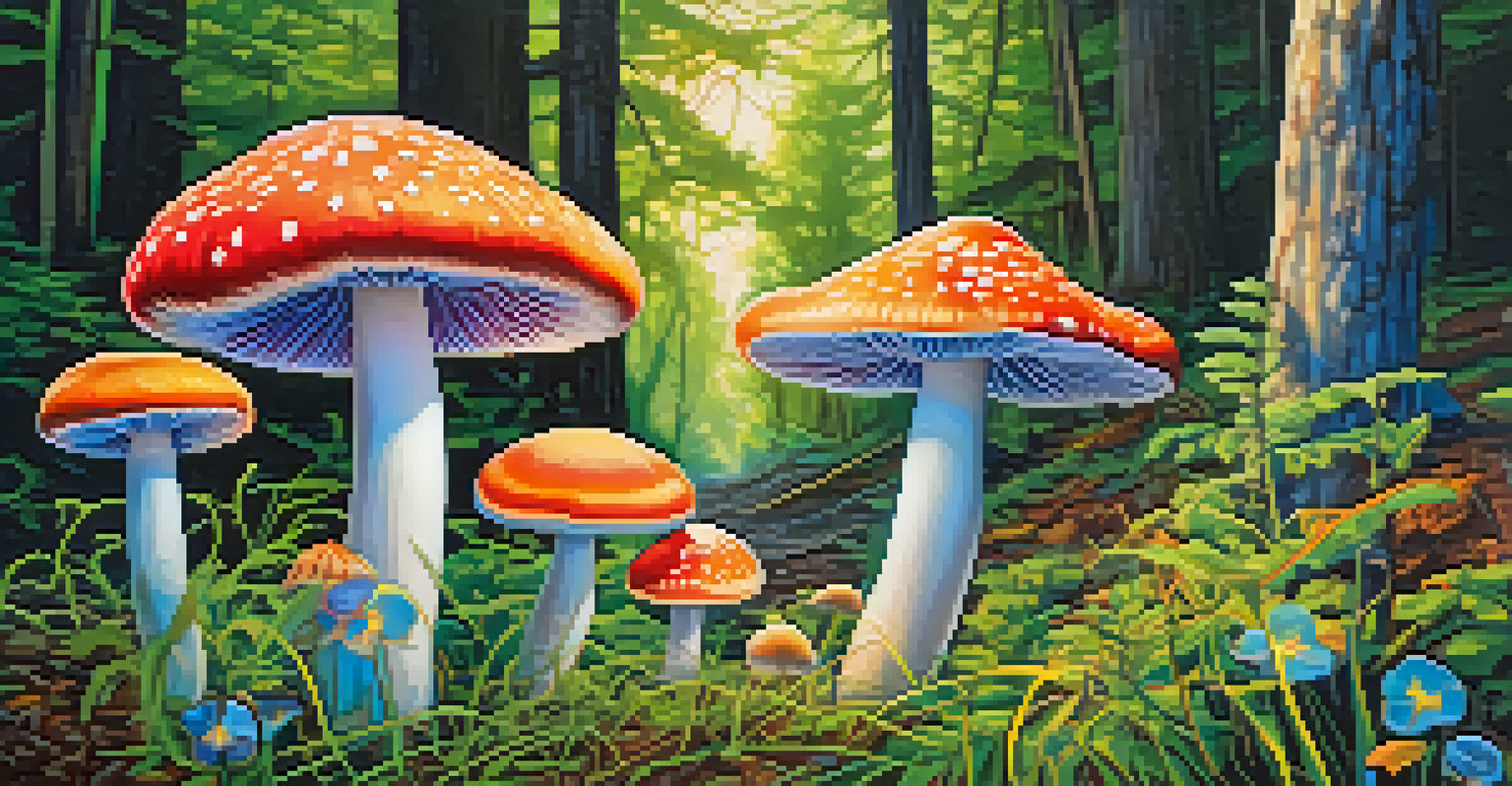Cultural Perspectives on Hallucinogens and Altered States

The Historical Roots of Hallucinogens in Cultures
Hallucinogens have been part of human culture for millennia, weaving their way into various traditions and practices. From the ancient use of peyote by Indigenous peoples in North America to the ceremonial use of ayahuasca in the Amazon, these substances have played significant roles in spiritual and healing practices. They are often viewed as pathways to deeper understanding or connection with the divine.
The use of hallucinogens can broaden our understanding of consciousness and reveal new pathways to healing.
In many cultures, these substances are not just recreational; they hold sacred significance. For instance, the Mazatec people in Mexico utilize psilocybin mushrooms in healing rituals, believing they channel the spirits of ancestors. This deep-rooted history highlights the varying perceptions of hallucinogens across the globe.
Understanding these cultural contexts can help dismantle stigmas surrounding hallucinogens today. By appreciating their historical significance, we can better comprehend how different societies approach altered states and their implications for personal and communal well-being.
Modern Uses of Hallucinogens in Therapy
In recent years, there's been a resurgence of interest in the therapeutic potential of hallucinogens. Research has shown promising results in treating conditions like PTSD, depression, and anxiety. For example, studies on psilocybin have demonstrated its ability to significantly reduce symptoms in patients, offering hope where traditional treatments may have failed.

The shift towards a more scientific approach is bridging the gap between ancient practices and modern medicine. Therapies that incorporate hallucinogens often take place in controlled environments, emphasizing safety and integration of the experience. This careful consideration mirrors the traditional use of these substances in rituals, where guidance and support are essential.
Cultural Significance of Hallucinogens
Hallucinogens have deep-rooted cultural significance, often used in spiritual and healing practices across various societies.
As we explore these modern applications, it's crucial to respect and acknowledge the cultural origins of these practices. By integrating traditional knowledge with contemporary science, we pave the way for a more holistic approach to mental health.
Spiritual Experiences and Hallucinogens
For many, hallucinogens serve as a gateway to profound spiritual experiences. Users often report feelings of interconnectedness, transcendence, and deep insight during their journeys. These experiences can mirror those reported in religious contexts, leading to a reevaluation of the boundaries between spirituality and drug use.
In the right setting and with the right intentions, these substances can unlock profound insights and foster spiritual growth.
One common theme is the sense of ego dissolution, where individuals feel a loss of self and a connection to a larger universe. This phenomenon has been likened to many mystical experiences described in various religious traditions. For instance, Buddhist practices emphasize the impermanence of the self, a concept echoed in hallucinogenic experiences.
These spiritual dimensions prompt us to ask deeper questions about the nature of consciousness and our place in the universe. As we investigate these altered states, we open ourselves up to new paradigms of understanding and meaning.
Cultural Taboo and Hallucinogens: A Double-Edged Sword
Despite their historical significance, hallucinogens often face cultural taboos and stigmas. In many societies, the use of these substances is associated with counterculture movements or irresponsible behavior. This negative perception can overshadow their potential benefits and lead to misunderstandings about their use.
This stigma can also result in legal repercussions, pushing traditional practices underground. For example, Indigenous communities may face challenges in practicing their rituals due to legal restrictions on sacred plants. These cultural barriers highlight the need for respectful dialogue and policy reform that acknowledges the rights of these communities.
Therapeutic Potential in Modern Therapy
Recent research highlights the promising therapeutic potential of hallucinogens in treating mental health conditions like PTSD and depression.
Addressing these taboos is essential for creating a more informed perspective on hallucinogens. By fostering open conversations, we can work towards destigmatizing their use and recognizing their cultural and therapeutic importance.
The Role of Ritual in Hallucinogenic Experiences
Ritual plays a crucial role in shaping the experiences of those who use hallucinogens. In many cultures, rituals provide a framework for understanding and integrating these experiences. They often include guided practices, music, and community support, ensuring that users feel safe and connected.
For instance, traditional Ayahuasca ceremonies often involve a shaman who leads participants through the experience, providing guidance and insight. This structured approach can help mitigate potential psychological challenges and enhance the positive aspects of the journey. The communal aspect also fosters a sense of belonging and shared understanding.
Rituals not only enhance the experience but also promote healing and personal growth. They remind us that these substances can be tools for transformation when approached with respect and intention.
Hallucinogens in Contemporary Pop Culture
In recent years, hallucinogens have made a notable appearance in contemporary pop culture. Movies, music, and literature often explore themes of altered states, reflecting society's growing fascination with these substances. They can serve as a metaphor for self-discovery or a means to challenge societal norms.
Artists like Tame Impala and films like 'The Matrix' delve into the nature of reality and perception, echoing the insights gained from hallucinogenic experiences. This cultural representation helps to spark curiosity and dialogue about altered states while also contributing to the stigma that can surround their use.
Bridging Cultures and Science
The future of hallucinogens lies in integrating traditional cultural practices with modern scientific research for a holistic understanding.
By examining these portrayals, we can gain insight into society's evolving views on hallucinogens. They serve as a lens through which we can explore deeper questions about consciousness, identity, and societal constraints.
Future Perspectives: Bridging Cultures and Science
As we move forward, there's a growing interest in bridging the gap between cultural practices and scientific inquiry regarding hallucinogens. This collaboration can foster a more comprehensive understanding of their effects and benefits. By integrating traditional knowledge with modern research, we can create a more nuanced perspective on these substances.
Various organizations and researchers are now working with Indigenous communities to ensure that their knowledge is respected and utilized in contemporary studies. This partnership can lead to more ethical approaches to research and a deeper appreciation for the cultural significance of hallucinogens.

Ultimately, the future of hallucinogens may lie in this intersection of cultures and science. By approaching the topic with respect and openness, we can unlock potential benefits that honor both ancient wisdom and modern advancements.